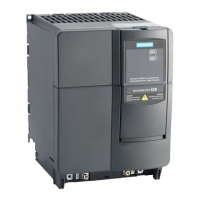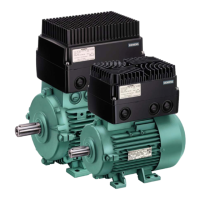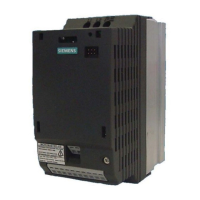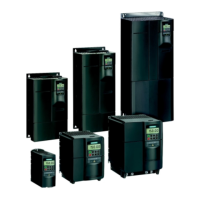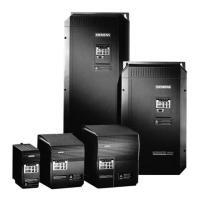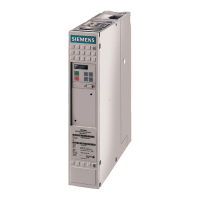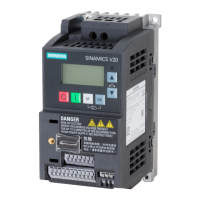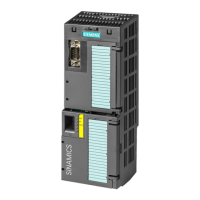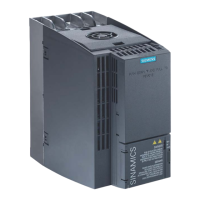What should I do if my Siemens Inverter shows F0030 Fan has failed?
- KKenneth HallSep 3, 2025
If your Siemens Inverter displays the error F0030 Fan has failed, it means you need a new fan.
What should I do if my Siemens Inverter shows F0030 Fan has failed?
If your Siemens Inverter displays the error F0030 Fan has failed, it means you need a new fan.
What does F0020 Mains Phase Missing mean on a Siemens MICROMASTER 430 Inverter and how to fix it?
If your Siemens Inverter displays the error F0020 Mains Phase Missing, check the input wiring of the mains phases.
How to resolve F0090 Encoder feedback loss on Siemens MICROMASTER 430 Inverter?
To resolve the F0090 Encoder feedback loss error on your Siemens Inverter: 1. Check that the encoder is fitted. If not, set P400 = 0 and select SLVC mode (P1300 = 20 or 22). 2. Check the connections between the encoder and the inverter. 3. Check that the encoder is not faulty by selecting P1300 = 0, running at a fixed speed, and checking the encoder feedback signal in P66. 4. Increase the encoder loss threshold in P492.
What to do if Siemens Inverter displays F0041 Motor Data Identification Failure?
If your Siemens Inverter shows the F0041 Motor Data Identification Failure, verify that the motor is properly connected to the inverter. Also, check if the motor data in P304-311 are correct, as the alarm value may indicate issues regarding identification thresholds.
What causes Siemens MICROMASTER 430 Inverter to display F0011 Motor Over Temperature?
The F0011 Motor Over Temperature error on your Siemens Inverter typically means the motor is overloaded. To resolve this, ensure that the load duty cycle is correct, the motor nominal overtemperatures (P0626-P0628) are correct, and the motor temperature warning level (P0604) matches.
What causes a Siemens Inverter to show F0005 Inverter I2T error?
The F0005 Inverter I2T error on a Siemens Inverter indicates that the inverter is overloaded or the duty cycle is too demanding. To resolve this, check that the load duty cycle lies within the specified limits and that the motor power (P0307) matches the inverter power (r0206).
How to troubleshoot F0004 Inverter Over Temperature on a Siemens MICROMASTER 430?
To troubleshoot an F0004 Inverter Over Temperature error on your Siemens Inverter, check if ventilation is adequate. Ensure the fan turns when the inverter is running and that the pulse frequency is set to the default value. Also, verify that the ambient temperature is not higher than specified for the inverter.
What to do if my Siemens MICROMASTER 430 Inverter displays F0003 UnderVoltage?
If your Siemens Inverter displays the error F0003 UnderVoltage, it indicates that the main supply has failed. To address this, check that the supply voltage (P0210) is within the limits indicated on the rating plate. Also, ensure that the supply is not susceptible to temporary failures or voltage reductions.
What to do if my Siemens Inverter displays F0002 OverVoltage?
If your Siemens Inverter is showing an F0002 OverVoltage error, it means the DC-link voltage (r0026) is exceeding the trip level (P2172). To fix this, verify that the supply voltage (P0210) is within the limits specified on the rating plate. Also, ensure the DC-link voltage controller is enabled (P1240) and properly parameterized. The ramp-down time (P1121) should match the inertia of the load, and the required braking power must be within specified limits.
How to fix Siemens DC Drives motor that fails to run after changing parameters?
If your Siemens DC drive motor won't run after you've changed the parameters, try this: First, set P0010 = 30, then P0970 = 1, and press the P button to reset the inverter to its factory default parameter values. Alternatively, use a switch between terminals 5 and 9 on the control board. The drive should now run to the defined setpoint by analogue input.
| Power Range | 7.5 kW to 250 kW |
|---|---|
| Voltage Range | 380V to 480V |
| Frequency Range | 0 Hz to 650 Hz |
| Protection Class | IP20 |
| Input Frequency | 47 Hz to 63 Hz |
| Digital Inputs | 6 |
| Cooling Method | Forced-air cooling |
| Communication | USS |
| Protection Features | Overvoltage, undervoltage, overcurrent, short-circuit, ground fault, overtemperature |
| Analog Inputs | 2 |
| Digital Outputs | 3 |
| Analog Outputs | 2 |
| Ambient Temperature | -10°C to +50°C |
| Control Type | Sensorless vector control |
Module status LED, diagnostics, and baud rates supported.
Supports SDOs, PDOs, PDO mapping, communication profiles, and monitoring services.
Features and characteristics of the CAN protocol: message-oriented, prioritization.
Standardized application for distributed industrial automation systems based on CAN.
Lists objects, index/subindex, description, data type, and default value for transfer.
Services for network management, communication monitoring, SDO, PDO, and emergency messages.
Instructions for installing the module on different MICROMASTER sizes (A, B, C, D, E, F, FX, GX).
Pin assignments, recommended bus cables, termination, and ground connection details.
Key parameters to check for initial system setup: Node ID, baud rate, telegram failure time.
Configuring PDOs, mapping entries, and data transfer types using parameters.
Allocating purpose to PZD data using parameters P0700, P1000, P2050, and P2051.
Overview of BICO connections for Velocity Mode and Profile Torque Mode.
Explanation of the combi LED states for module/network status and errors.
Table of alarms, warnings, and faults displayed at the drive converter.
Specifications for dimensions, mechanical strength, environmental conditions, and power.
Glossary of abbreviations used throughout the document.
